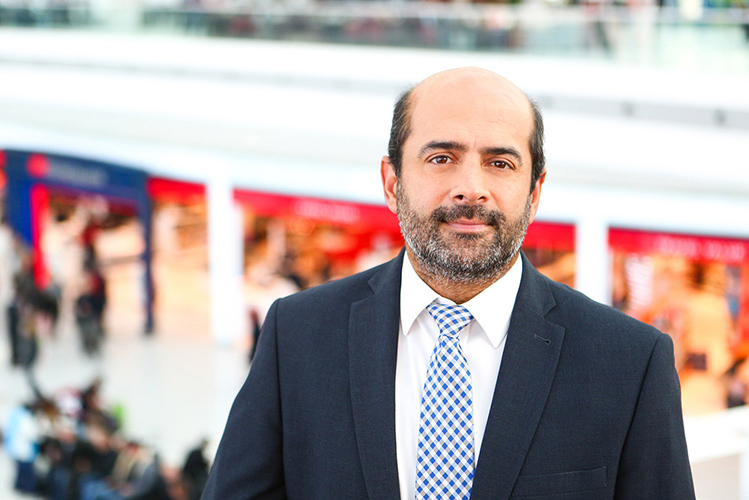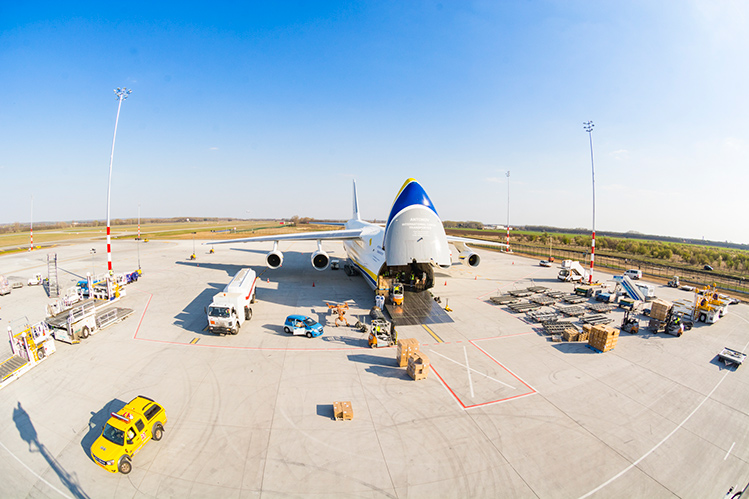Budapest Airport’s initial forecast for 2020 was over 17 million passengers, further building on the double-digit growth in each of the last five years. Indeed, it was just ahead of schedule for the first 10 weeks of the year, but then, like most airports, the impact of COVID-19 started to be felt. In March, passenger numbers were down by almost 58%.
“This means that we had 495,000 passengers versus 1.17 million last March,” explains Kam Jandu, Chief Commercial Officer, Budapest Airport.
It was the first monthly decline since November 2013, and the airport is now down to around 35 flights per week compared with the typical average at this time of over 1,500.
“Of course, when we are down to this few numbers of flights and passengers, it means that shops, restaurants and car parks are empty, in fact they are mostly closed already – so we have been losing money there too,” says Jandu. “The measurable effect is really that we expect to lose between four million and 5.5 million passengers compared to last year and their associated spending in shops and car parks, etc, assuming that recovery starts in June.”

Kam Jandu, Chief Commercial Officer, Budapest Airport: “No-one has been through anything like this and if we panic, then we fail our people and stakeholders. Act swiftly, check the trends of the virus, be bold but be calm, because this will pass, and we will need our people more than ever to help our airline partners to fill their aircraft as soon as possible. Our industry depends on cohesive thinking and planning.”
Cohesive thinking and planning
The Budapest Airport leadership team acted swiftly when passenger numbers started to soften. “We split ourselves into two groups to ensure that we remained apart, especially as we are probably working harder than ever these days,” Jandu comments. “From a health perspective, we of course equipped our still working staff with what is now known as PPE and have clear processes if anyone falls ill. As we are not sure when recovery will come, apart from some useful assumptions we are still fine-tuning, we made ourselves a target of stripping cost out of the business where possible, including postponing a lot of big planned projects and events.”
The airport also immediately introduced a voluntary salary reduction package for staff of between 20% and 50%, to help avoid big losses later. “I am pleased to say that over 80% of our workforce joined us in this initiative for April and some in May too – we are in this together,” says Jandu.
The Budapest team is fully working on getting more and more freight traffic at the airport and has seen the numbers grow significantly year-on-year as much-needed medical equipment arrives. Terminal operations were consolidated to preserve utility costs and remain lean and efficient. “Of course, there are other actions which we have in the pipeline if close to zero traffic continues longer than we anticipate. In short, we are prepared and virtually meet daily to discuss our corona actions.”
Jandu adds: “No-one has been through anything like this and if we panic, then we fail our people and stakeholders. Act swiftly, check the trends of the virus, be bold but be calm, because this will pass, and we will need our people more than ever to help our airline partners to fill their aircraft as soon as possible. Our industry depends on cohesive thinking and planning.”

The Budapest team is fully working on getting more and more freight traffic at the airport and has seen the numbers grow significantly year-on-year as much-needed medical equipment arrives.
Getting the country healthy is, of course, the biggest priority right now. Based on countries where the pandemic has already passed through the worst period, the belief is that Hungary could be at its peak by mid-May as the country has been quick to isolate so the curve is being flattened.
“We can expect, therefore, that together with some responsible actions such as wearing masks, and maybe carrying certificates showing health status as is being talked about in neighbouring countries, the country will re-open towards the end of May and we can see the start of flights in mid-June onwards,” says Jandu. “Then I anticipate a gradual recovery each month, continuing through until the end of the winter season and then a bullish summer 2021 season. Most likely, we will return fully back to normal in calendar year 2022 notwithstanding any second waves or extreme recession.”
When this passes, Budapest will remain one of the most dynamically-growing and beautiful cities in the world. Testament to this is the airport’s double-digit growth in each of the last five years. “As the gateway to the CEE region, all the ingredients are here for early returners to tap in to and they can count on the best Airport Marketing team in the world according to Routes for 2019 to support them in our own inimitable way.”







